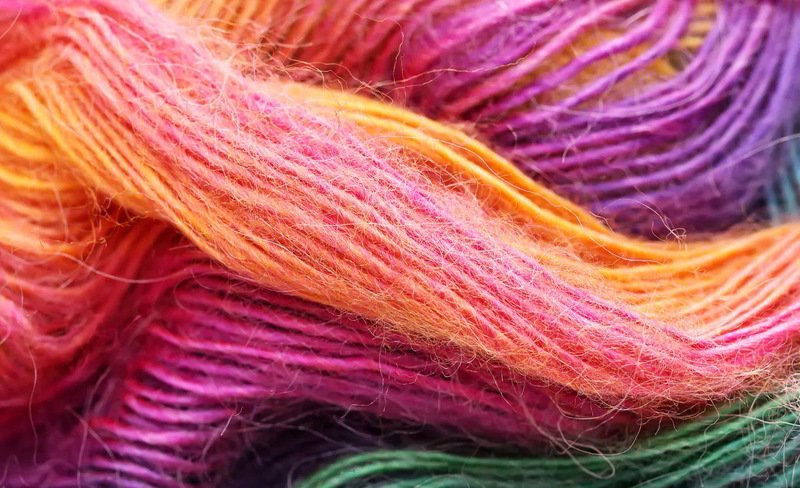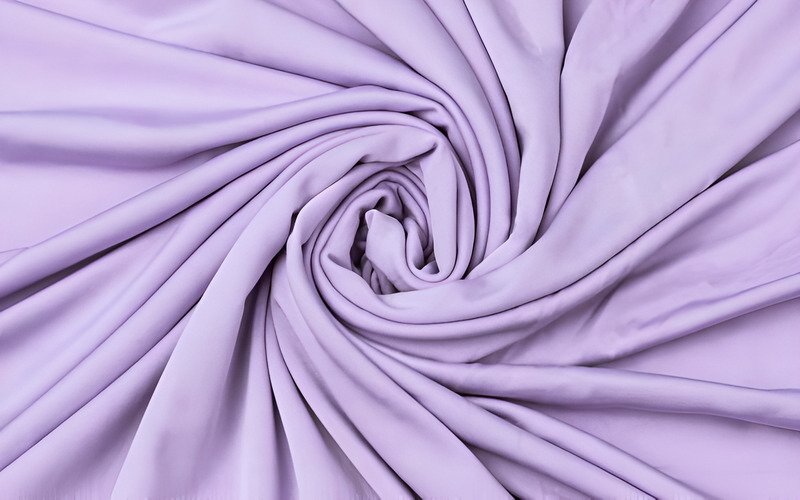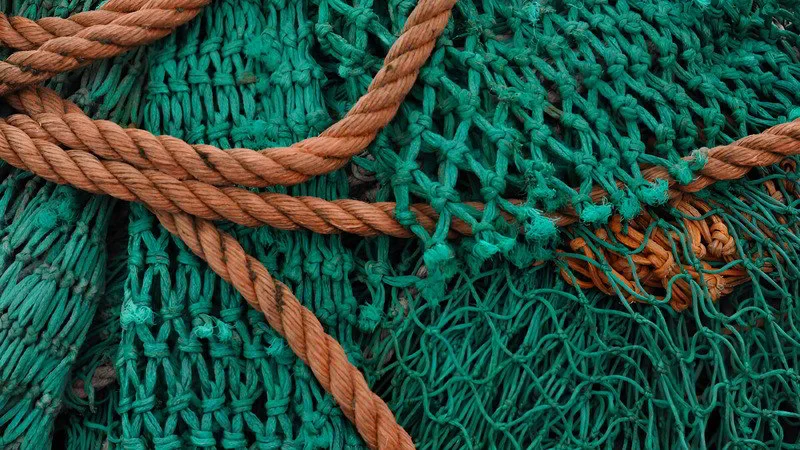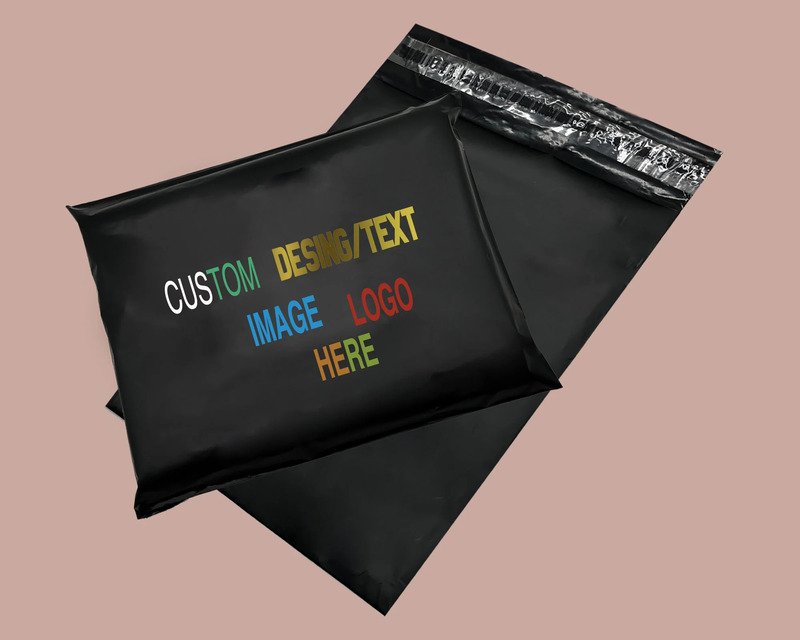What Is Synthetic Fiber? Simple Guide To Types And Properties
Synthetic fibers are special man-made materials you see and use every day. They are in your clothes, your home, and even in the packaging that protects your favorite products. Understanding what synthetic fibers are can help you choose better products and care for them well. This guide will simply explain what they are, how they are made, some common types, and their many uses, including how they make great labels and packaging.
1. Introduction to synthetic fibers
You probably use items made with synthetic fibers every day without even thinking about it. These man-made materials are all around us. From the stretchy gym wear that keeps you comfortable to the strong shipping bags that deliver your online orders, synthetic fibers play a big role.
Knowing a bit about these fibers helps you understand why they are chosen for different products. It can also help you care for these items so they last longer. In this article, we will explore the world of synthetic fibers.
We will cover what they are, some common types, how they are made, and their many uses. We will also see how these fibers are important for things like product labels and packaging.

2. What are synthetic fibers?
So, what is synthetic fiber? In simple terms, a synthetic fiber is a fiber made by people using chemicals. This is different from natural fibers, which come from plants (like cotton) or animals (like wool). You might also hear synthetic fibers called man-made fibers, artificial fibers, chemical fibers, or manufactured fibers.
The key thing to remember about the origin of synthetic fibers is that they start with chemical compounds. These chemicals are transformed into the fibers through factory processes. This is a big difference compared to natural fibers, which have been used for thousands of years. Synthetic fibers are a more recent invention.
The basic building blocks of synthetic fibers are polymers. Think of a polymer as a very long chain made of many small, repeating chemical units linked together. These polymers in synthetic fibers are the base material or source material created from the initial chemical compounds. These textile materials are designed to have specific qualities. Understanding what synthetic fiber means is the first step to appreciating their versatility.
3. How are synthetic fibers made?
The production of synthetic fibers is a clever man-made production process. It might sound complex, but here’s a very simple look at the synthetic fiber manufacturing process:
- Starting materials: It usually begins with simple chemicals. Often, these chemicals come from petroleum (oil) or coal. This helps answer the question, “what are synthetic fibers made of?”
- Polymerization: Next, these simple chemicals go through chemical reactions. These reactions cause the small chemical units to join together, forming long chains called polymers.
- Extrusion/spinning: The polymers are then melted or dissolved to create a thick liquid. This liquid is forced through tiny holes in a device called a spinneret (think of it like a showerhead). As the liquid comes out, it forms long, thin threads called filaments.
- Solidifying & processing: These new threads are then solidified, often by cooling or by using other chemicals. They can be stretched to make them stronger and thinner, and sometimes they are treated with more chemicals to give them special properties.
This entire process happens in factories, making synthetic fibers industrial materials.
4. Common synthetic fiber types & uses
There are many types of synthetic fibers, and each one has its own special qualities. This is why you find them in so many different products. Let’s learn about different kinds of synthetic fibers and see examples of items made with synthetic fibers. Here are a few common ones:
4.1 Polyester
- What it is: Polyester is one of the most widely used synthetic fibers. It is very versatile.
- What it’s like: The properties of polyester include being strong, resistant to wrinkles and shrinking, and drying quickly. It also holds its shape well and can be made to look silky or like cotton. It has good durability.
- Common uses: You’ll find uses of polyester fiber in products like shirts, pants, jackets, dresses, bed sheets, curtains, carpets, and even for woven labels because they are so durable.

4.2 Nylon
- What it is: Nylon was one of the first synthetic fibers ever made.
- What it’s like: It is exceptionally strong, lightweight, and elastic (it can stretch). It’s also resistant to abrasion (rubbing) and many chemicals.
- Common uses: Common uses of nylon include stockings, socks, ropes, parachutes, toothbrushes, carpets, and outdoor gear like tents.
4.3 Acrylic
- What it is: Acrylic fibers are often used as a replacement for wool.
- What it’s like: It is soft, warm, lightweight, and resistant to moths and sunlight damage.
- Common uses: You can find what is acrylic fiber in sweaters, blankets, hats, gloves, and upholstery.
4.4 Spandex
- What it is: Spandex, often called Lycra or Elastane, is known for its amazing stretch.
- What it’s like: Its main key property is incredible elasticity – it can stretch many times its original size and then return to its original shape.
- Common uses: Spandex uses are common in sportswear, swimwear, leggings, waistbands, and any clothing where a snug, flexible fit is needed. Many clothes use synthetic fibers like spandex for comfort and movement.

5. General characteristics of synthetic fibers
While each type of synthetic fiber is unique, many share some general characteristics of synthetic fibers. These synthetic fiber properties are why they are so useful and popular. Knowing these can help you know the good and bad points of synthetic fibers.
- Strength and durability: Most synthetic fibers are strong and last long. They can withstand a lot of pulling and rubbing without breaking easily. This durability is a major advantage.
- Water resistance: Many synthetic fibers do not absorb much water. This means they dry quickly and are resistant to mildew.
- Resistance to pests and mold: Unlike natural fibers like wool or cotton, synthetic fibers are generally not eaten by moths or damaged by mold.
- Elasticity: Some synthetic fibers, like Spandex and Nylon, have excellent elasticity. They can stretch and then spring back to their original shape.
- Cost-effectiveness: Often, synthetic fibers are cheaper to produce than some natural fibers, which can make products more affordable.
- Versatility: Synthetic fibers are incredibly versatile. They can be engineered to have different textures, looks, and feels – from silky smooth to soft and fluffy.
These properties explain why use synthetic fibers for clothes and many other items that need to be tough, long-lasting, or have special features.

6. Synthetic vs. natural fibers: key differences
The biggest difference between natural and synthetic fiber lies in their origin. As we’ve learned, synthetic fibers are man-made from chemicals in factories. The key difference is their origin: synthetic fibers are made from chemicals, not natural sources. Natural fibers, on the other hand, come directly from plants (like cotton or linen) or animals (like wool or silk).
Here’s a simple look at some other common synthetic fibers vs natural fibers differences:
| Feature | Synthetic Fibers | Natural Fibers |
|---|---|---|
| Source | Chemicals (often from petroleum) | Plants or animals |
| Breathability | Generally less breathable | Often more breathable |
| Moisture | Tend to resist water, dry quickly | Absorb more moisture, dry slower |
| Feel | Can be engineered for various feels | Often have a distinct, natural feel |
| Pest resistance | Generally resistant | Can be susceptible to moths, insects |
| Environmental | Production uses non-renewable resources; some can be recycled. | Farming can use pesticides, water; biodegradable. |
When thinking about environmental effects of making fibers, both types have impacts. Synthetic fiber production can use a lot of energy and non-renewable resources. Natural fiber production can involve pesticides and large amounts of water. It’s a complex topic with pros and cons for both.
7. Everyday examples of synthetic fibers
Synthetic fibers in everyday life are truly everywhere! You probably use dozens of items made with synthetic fibers without even realizing it. Here are some common examples of synthetic fibers in action:
In your closet:
- Sportswear and activewear (often polyester, spandex)
- Raincoats and umbrellas (nylon, polyester)
- Fleece jackets (polyester)
- Many shirts, dresses, and pants
- Stockings and socks (nylon, acrylic)
Around your home:
- Carpets and rugs (nylon, polyester, acrylic)
- Curtains and upholstery (polyester, acrylic)
- Bedding like comforters and pillows (polyester fill)
- Cleaning cloths and sponges
Other items:
- Ropes and nets (nylon, polypropylene)
- Seatbelts (polyester)
- Luggage and backpacks (nylon, polyester)
- Toothbrush bristles (nylon)
This list shows just how much we rely on the special properties of synthetic fibers.
8. Synthetic fibers: enhancing your brand’s presentation and protection
Beyond their use in clothing and household items, synthetic fibers play a crucial role in product branding, ensuring your brand’s image is maintained and your products are well-represented and protected. At Packlove, we understand the importance of selecting the right materials for these essential branding elements.
When selecting the best fiber materials for clothing labels and product tags, synthetic options like polyester woven labels and printed satin labels (satin is often polyester-based) offer significant advantages.
- Why choose synthetic for labels? The primary benefit of synthetic fibers like polyester in labels is their exceptional durability. Labels crafted from these materials can endure numerous washes and extensive wear without fading, fraying, or losing their integrity. This ensures your brand identity remains clearly visible and sharp on the garment throughout its lifespan.
- Vibrant and clear printing: The smooth surface characteristic of many synthetic fibers allows for incredibly sharp, detailed, and vibrant printing. This makes your logo, brand name, and essential care instructions clear, legible, and visually appealing.
- Packlove’s insight: Our experience shows that fashion brands often favor polyester woven labels for their premium feel and outstanding resilience through countless washes, a testament to synthetic fiber performance. For those seeking a softer, silkier touch coupled with excellent print quality, our printed satin labels are a popular choice.
8.2. Strong and protective packaging solutions
Synthetic materials are also fundamental in creating robust and effective packaging, crucial for protecting products during transit and handling.
- The role of poly mailers: Our poly mailers serve as a prime example. Typically manufactured from polyethylene, a type of synthetic plastic, they offer excellent protection.
- Key packaging benefits: These synthetic mailers are strong, lightweight, and highly resistant to tearing and moisture. This means they safeguard your products effectively during shipping while often being more cost-effective for postage compared to heavier, bulkier packaging options.
At Packlove, we guide you in choosing suitable synthetic materials for both your branding items and packaging because we recognize their superior performance and reliability. Packlove proudly offers a range of labels from synthetic fibers and durable synthetic packaging solutions like poly mailers, enabling customers to select synthetic fibers for product tags and labels that truly reflect their brand’s quality and commitment.

9. Specialized synthetic fibers & uses
Beyond the common types like polyester and nylon, there are also many special synthetic fibers created for specific, often demanding, jobs. These fibers often have unique rare attributes.
- Recycled synthetic fibers: As people look for more sustainable options, recycled synthetic fibers are becoming popular. For example, polyester can be made from recycled materials like plastic bottles. This gives waste a new life.
- High-performance fibers: These are super-strong or have special features. Think of fibers that are fire-resistant (used in firefighter suits), bulletproof (like Kevlar), or provide excellent UV protection. These high-performance fibers are used in safety gear, aerospace, and sports equipment.
- Blended fibers: Often, synthetic fibers are blended with natural fibers like cotton or wool. This creates a fabric that combines the best qualities of both. For example, a cotton-polyester blend can be soft and breathable like cotton, but also more durable and wrinkle-resistant due to the polyester.
These special fibers show how versatile and innovative synthetic materials can be.
10. Frequently asked questions about synthetic fibers
10.1 Are all synthetic fibers waterproof?
Not all synthetic fibers are completely waterproof, but many are highly water-resistant. This means they don’t absorb much water and dry quickly. Some, like nylon or specially treated polyester, can be made almost fully waterproof for items like raincoats or outdoor gear.
10.2 Are synthetic fibers bad for your skin?
For most people, synthetic fibers are perfectly safe and comfortable to wear. However, some individuals with very sensitive skin might experience skin irritation from certain types of synthetic fibers or their finishes. If this happens, trying natural fibers or blends might be a good alternative.
10.3 Can synthetic fibers be environmentally friendly?
The environmental impact of synthetic fibers is a complex issue. Their production often uses non-renewable resources like petroleum and can consume energy. However, synthetic fibers are often very durable, meaning products made from them can last a long time, reducing the need for frequent replacement. Also, there’s a growing trend towards recycled synthetic fibers (e.g., polyester made from recycled materials like plastic bottles), which helps reduce waste and the need for new raw materials. The environmental effects of making fibers vary greatly.
10.4 How do I care for clothes made of synthetic fibers?
One of the big advantages of synthetic fibers is that they are generally easy to care for. Most are machine washable, dry quickly, and resist shrinking and wrinkling. However, it’s always best to check the care label on the garment. A general tip is to avoid very high heat (like in a hot dryer or iron) as it can sometimes damage or melt synthetic fibers.
Read more:
As we’ve seen, synthetic fibers are remarkable man-made materials. They are created from chemicals, offering a wide range of properties that make them incredibly versatile fibers. From the clothes we wear to the packaging that protects our goods, their presence is undeniable.
The development of synthetic fibers has changed how we live, work, and play. Their strength, durability, and ability to be engineered for specific needs make them an essential part of modern life. Understanding a little about them helps us appreciate their role and the technology behind them. The importance of synthetic fibers in our daily lives continues to grow as new innovations emerge.






















